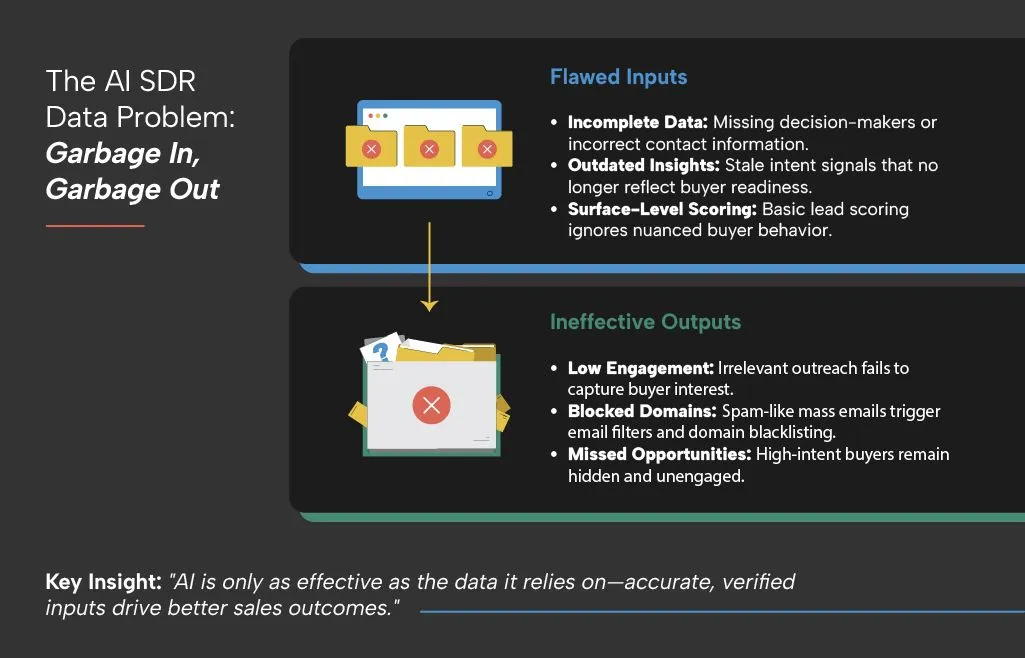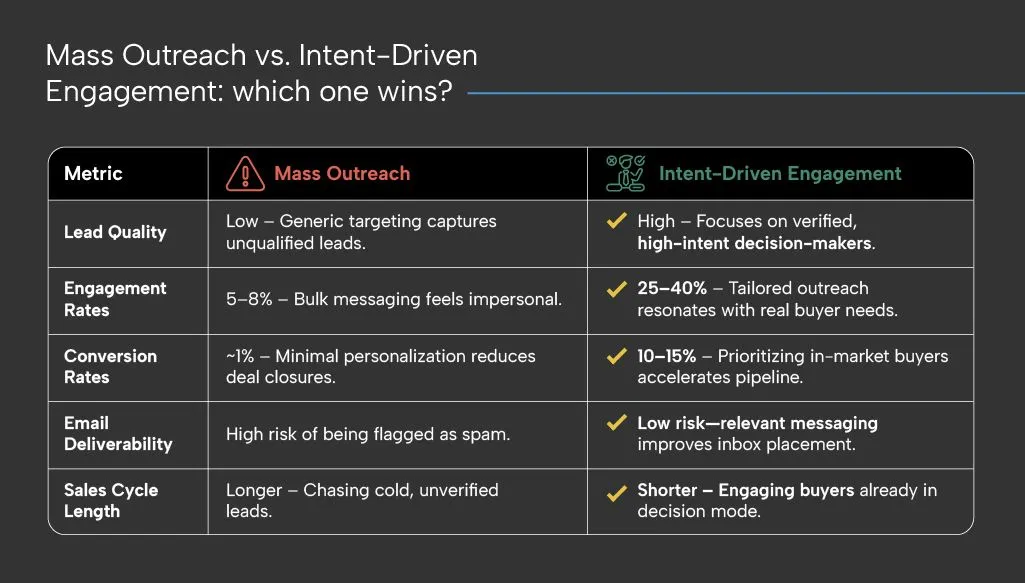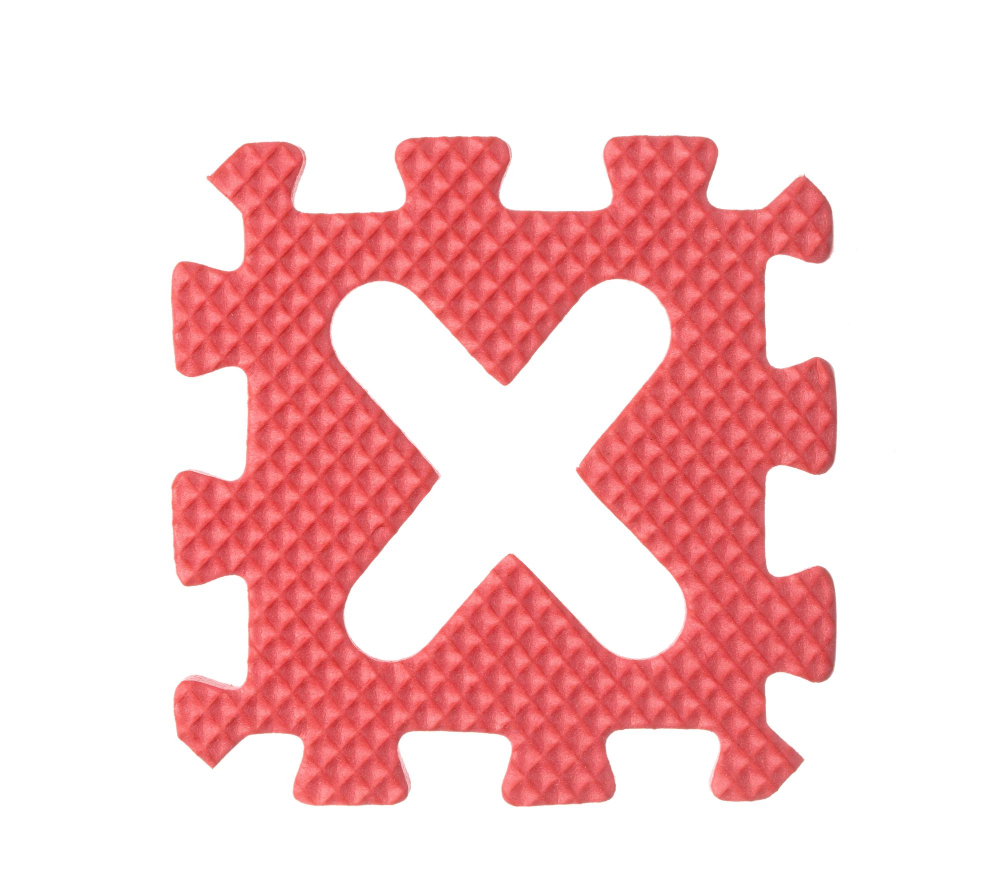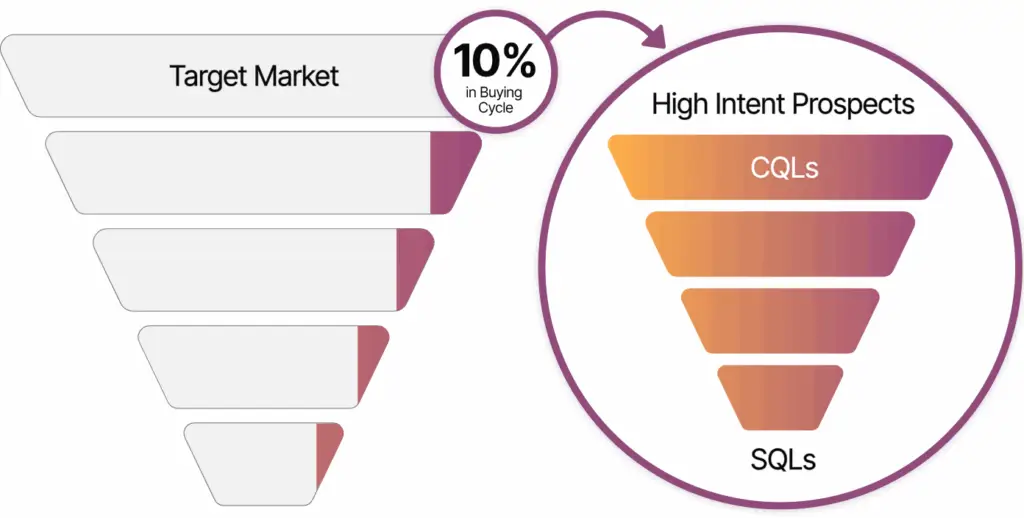Is the AI SDR Bubble Bursting? 3 Reasons Why Automation is Failing Sales Teams
AI Sales Development Representatives (SDRs) promised to revolutionize sales prospecting by automating the tedious work of lead generation and outreach. Investors poured millions into AI SDR platforms, betting big on their ability to drive efficiency and boost revenue.
For a while, the promise seemed real. AI-powered systems offered 24/7 outreach, hyper-personalized messaging, and faster pipeline growth. But cracks were beginning to show. Instead of delivering predictable growth, many AI SDR platforms are causing operational headaches, eroding trust, and undermining pipeline quality.
Sales leaders are now asking tough questions: Is the AI SDR bubble bursting? And if so, what went wrong?
Here are three major reasons why AI SDR automation is failing sales teams—and how smarter sales engagement platforms like Audienz.ai offer a better path forward.
Challenge #1: Garbage In, Garbage Out—Flawed Data Foundations

AI SDRs depend entirely on the data they’re fed. But too often, that data is flawed, outdated, or incomplete. Many AI-driven sales platforms rely on commoditized data sources like LinkedIn or generic third-party datasets. While these sources offer scale, they lack the depth required to deliver accurate, high-quality leads.
When flawed data powers outreach, the result is predictable:
- Poor Targeting: AI sends messages to irrelevant or unqualified leads, wasting time and damaging brand reputation.
- Low Conversion Rates: Without accurate intent signals, AI SDRs struggle to identify prospects who are ready to engage.
- Domain Blacklisting: High volumes of generic outreach trigger spam filters, leading to blocked email domains and reduced deliverability.
Key Takeaway: Automation alone can’t fix bad data. Without a foundation of verified, high-quality intent data, AI SDRs amplify errors instead of solving them.
Challenge #2: Mass Outreach is Destroying Sales Pipelines

AI SDRs often operate on a simple equation: more outreach equals more pipeline. This logic drives mass-email strategies that prioritize volume over value. But today’s buyers are savvier—and more overwhelmed—than ever.
The consequences of mass outreach are significant:
- Inbox Fatigue: Prospects receive hundreds of automated messages daily, leading to lower open rates and increased opt-outs.
- Burned TAM (Total Addressable Market): AI exhausts potential leads quickly, leaving fewer opportunities for human reps to engage meaningfully.
- Generic Messaging: Personalization at scale remains a challenge. Most AI SDRs recycle templated messages, failing to resonate with sophisticated buyers.
In high-touch sales environments—especially for enterprise accounts—automation can’t replace the strategic insights and human empathy required to close deals.
Key Takeaway: Over-reliance on mass outreach erodes trust and damages the long-term health of your sales pipeline.
Challenge #3: The Missing Element—Real Buying Intent

The most glaring failure of AI SDRs is their inability to capture and act on genuine buying intent. Traditional AI platforms focus on surface-level data—like job titles and company size—but ignore person-level intent data derived from behavioral cues that signal real purchase readiness. Unlike IP-based data, which lacks precision, Audienz leverages mobile data to provide deeper, more accurate insights into individual buyer behavior.
Without intent data, AI SDRs can’t differentiate between a casual browser and a decision-maker with an urgent problem to solve. This leads to:
Wasted Effort: Reps spend time chasing unqualified leads who will never convert.
Missed Opportunities: Hot prospects slip through the cracks because the system can’t recognize critical buying signals.
Inaccurate Scoring: AI-driven lead scoring often relies on static attributes rather than dynamic, real-time intent.
Key Takeaway: Sales success depends on understanding not just who a prospect is, but what they need—and when they need it.
The Solution: Smarter Sales Engagement with Verified Person-Level Intent

If the AI SDR bubble is bursting, what’s next? The answer lies in combining automation with verified, real-time intent data.
Platforms like Audienz.ai are leading this new wave of smarter sales engagement by addressing the core failures of AI SDRs:
- Intent-Driven Targeting: Audienz.ai uses verified person-level intent data sourced from mobile activity (not IP data) to identify buyers who are actively researching solutions, ensuring every outreach is timely and relevant.
2. Intelligent Prioritization: Instead of treating all leads equally, Audienz.ai scores and prioritizes opportunities based on real behavioral signals, helping reps focus on the most promising prospects.
3. Seamless Integration: Audienz.ai connects with existing CRM and marketing platforms, ensuring that intent signals enhance—not complicate—your existing workflows.
How Audienz.ai Fixes the AI SDR Failures
- Better Data, Better Outcomes: By using enriched, dynamic intent data, Audienz.ai ensures accurate targeting and more meaningful conversations.
- Precision Outreach: No more spam cannons. Audienz.ai personalizes messages using real-time insights, improving response rates and accelerating pipeline growth.
- Operational Efficiency: Audienz.ai automates tedious data workflows while empowering ops teams with transparent, customizable controls.
Why Audienz.ai is the Future of AI-Driven Sales Engagement
The AI SDR bubble may be bursting—but smarter, intent-driven automation is here to stay. Audienz.ai is leading this new era by offering:
- Accurate, Unified Data – No more garbage inputs
- Intent-Driven Targeting – Engage prospects when they’re ready to buy
- Person-Level Insights – Go beyond firmographics with real behavioral signals powered by person-level intent data derived from mobile activity, ensuring precision and relevance.
- Human-AI Collaboration – Empower your team while automating the mundane
- Continuous Optimization – Improve strategies with real-time performance analytics
With Audienz.ai, sales teams no longer rely on outdated automation models. Instead, they engage smarter—building real pipeline opportunities and driving sustainable revenue growth.
Conclusion: The Future of Sales Prospecting
The AI SDR bubble is bursting because automation alone can’t solve the most critical challenges in modern sales. Flawed data, mass outreach, and a lack of real intent signal have turned AI-driven systems into liabilities rather than assets.
Sales leaders need a smarter approach—one that combines the efficiency of automation with the precision of verified intent data. Platforms like Audienz.ai deliver this next generation of sales engagement by aligning outreach with real buyer needs and empowering teams with actionable insights.
Experience the power of Audienz.ai—Request a Free Demo Today!

